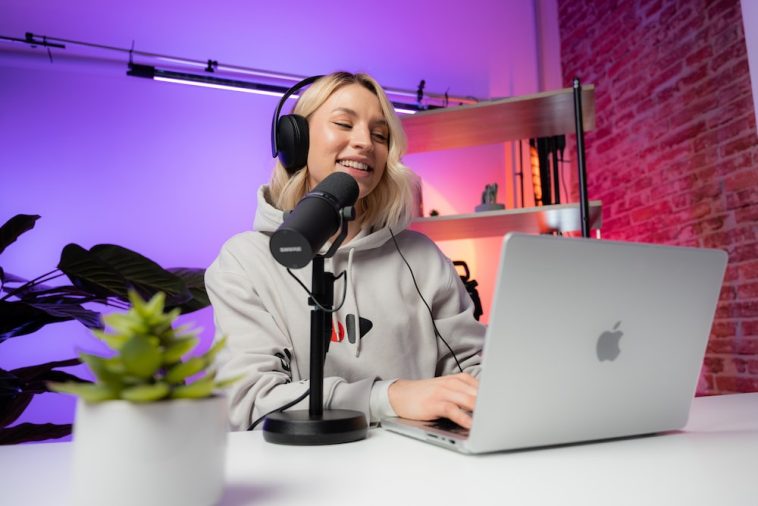Introduction.
Starting a podcast might sound like a huge undertaking, especially if you picture a room full of high-end equipment.
But the reality is, you can start a podcast using just your phone.
Podcasting has exploded, with over 464 million podcast listeners globally as of 2023, and the barrier to entry has never been lower.
If you’re passionate about a topic, have insights to share, or just want to connect with others, there’s really no reason to wait.
In this guide, I’ll walk you through everything you need to know to get your podcast off the ground using nothing but your phone.
How Do I Start a Podcast On My Phone?
Podcasting is one of the fastest-growing forms of media.
Whether you’re looking to build a brand, share a passion, or connect with like-minded people, podcasting can be an incredibly fulfilling way to make an impact. And with mobile-friendly options, it’s easier than ever to get started.
Step 1: Planning Your Podcast
A solid plan is the foundation of a great podcast. Here’s how to get started:
1. Choose Your Niche
Pick a topic that interests you and is likely to resonate with others. You want something you’ll enjoy talking about for a long time—whether it’s sports, personal finance, true crime, or mindfulness. Research other podcasts in your niche to see what’s already out there and find your unique angle.
2. Define Your Target Audience
Knowing who you’re talking to makes your content more relatable. Create a listener profile to imagine the ideal person tuning into your podcast. The more you understand your audience, the better you can tailor your content to them.
3. Decide on Your Podcast Format
Podcast formats vary—some people prefer solo shows, while others enjoy interviews or co-hosted discussions. Decide what feels most natural and engaging for you. Solo shows offer more control, while interviews bring new perspectives and can help expand your reach.
4. Plan Your Episodes
Outline the first few episodes and decide on a release schedule you can realistically stick to. Consistency is essential for audience growth, so try to stick to a regular publishing timeline.
Step 2: Recording on Your Phone
Recording audio on a smartphone is incredibly straightforward. Here’s how to make the most of your device:
1. Find a Quiet Space
Good audio quality is crucial, and you don’t need fancy equipment to achieve it. Record in a quiet room with minimal echo. Consider using pillows or blankets around the recording area to absorb sound.
2. Use a Quality Microphone App
Several high-quality apps are available for recording audio on a smartphone:
- Anchor (Free, iOS & Android): Anchor not only records audio but also allows editing and distribution directly from the app.
- Spreaker Studio (Free, iOS & Android): Spreaker offers live broadcasting, background music, and sound effects.
- Ferrite Recording Studio (Free with in-app purchases, iOS): A powerful app for recording and editing audio, Ferrite offers plenty of flexibility for podcasters.
3. Consider Using a Microphone
While your phone’s built-in mic works fine, an external microphone can boost audio quality. Clip-on lapel mics or mini USB mics are affordable and easy to use with phones.
Step 3: Editing Your Podcast
Editing cleans up your audio adds music, and ensures your podcast sounds polished.
1. Editing Apps
- Anchor: Anchor allows basic trimming, music addition, and transitions.
- GarageBand (Free, iOS): Popular for iOS users, GarageBand has tools for advanced editing and music layering.
- Adobe Audition (Paid): If you want more control, Adobe Audition is highly professional, though you’d need to transfer files to a computer for in-depth editing.
2. Adding Music and Sound Effects
Music can set the mood, and most podcast apps offer libraries of royalty-free music. Just remember that excessive sound effects can distract listeners, so use them sparingly.
3. Keep It Simple
Over-editing can make a podcast feel scripted. Try to maintain a natural feel by only editing out long pauses, background noise, or accidental interruptions.
Step 4: Hosting and Distributing Your Podcast.
Once your episode is recorded and edited, you need a place to host it and a way to share it.
1. Podcast Hosting Platforms
Here are a few beginner-friendly hosting platforms:
- Anchor (Free): Owned by Spotify, Anchor is free and handles distribution to all major platforms, including Apple Podcasts and Google Podcasts.
- Podbean (Free and Paid): Podbean offers both free and paid options, with extra analytics and monetization on premium plans.
- Buzzsprout (Free with limitations, Paid): A popular choice for beginners, offering hosting, distribution, and monetization options.
2. Distribute Your Podcast
Once hosted, your podcast will be distributed to major directories like Apple Podcasts, Spotify, and Google Podcasts, making it accessible to millions.
3. Promote Your Podcast.
Social media is a powerful tool for growing your podcast audience. Share snippets, behind-the-scenes stories, and updates on platforms where your audience spends time. Consistency is key—so keep sharing.
Pros and Cons of Starting a Podcast on Your Phone
| Pros | Cons |
|---|---|
| Minimal equipment cost and setup | Limited editing capabilities on mobile |
| Portable—record anywhere | Potentially lower audio quality without external mic |
| Accessible distribution through apps like Anchor | Limited in-app sound effects and mixing options |
| Quick, straightforward setup | Battery life may be an issue for long recordings |
Frequently Asked Questions (FAQ)
Q: Do I need any special equipment?
A: Not necessarily. Your phone is enough to start, though an external mic can improve audio quality.
Q: Can I make money with a podcast?
A: Yes! Many hosting platforms offer monetization options, such as sponsorships or listener donations, but it may take time to build an audience.
Q: What’s the ideal length for a podcast episode?
A: The average length of popular podcasts is around 22-40 minutes, but there’s no hard rule. The length should depend on your content and audience.
Q: How do I choose music for my podcast?
A: Make sure you use royalty-free music to avoid copyright issues. Many podcast apps offer built-in libraries of royalty-free music.
Q: How often should I release episodes?
A: It’s best to start with a frequency you can maintain. Weekly or bi-weekly releases are common, but choose what works for you.
Conclusion
Podcasting is a powerful way to connect, share ideas, and build a community.
With just a smartphone, you can jump into the world of podcasting without any complicated setup or major investments.
As you go, you’ll learn, refine your style, and connect with listeners who resonate with your voice.
So, what would be the first topic you’d cover in your podcast?





GIPHY App Key not set. Please check settings